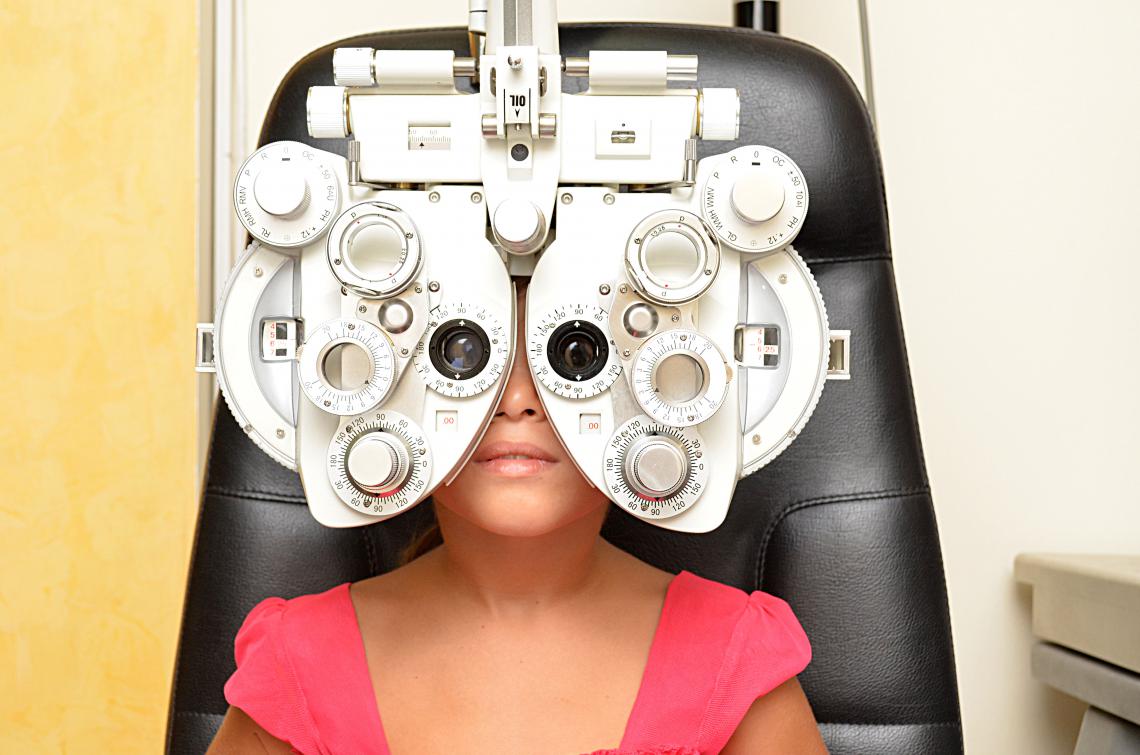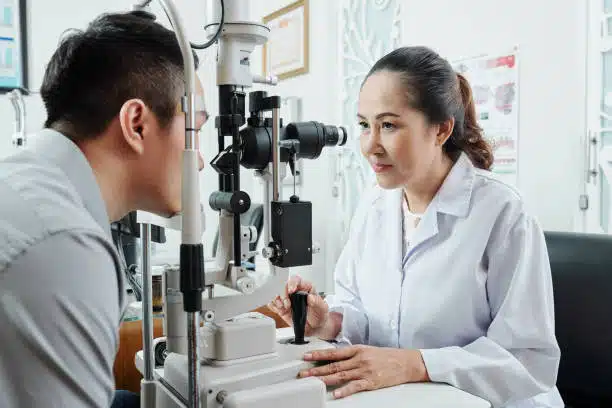Checking Out the most recent Technical Improvements in Optometry and What They Mean for Eye Doctors
In the ever-evolving field of optometry, recent technological innovations are improving exactly how specialists come close to eye care. From the accuracy of Optical Coherence Tomography to the nuanced understandings used by AI-driven diagnostic devices, these developments are setting brand-new requirements in patient analysis and treatment. Teleoptometry is poised to redefine availability, making sure that proficiency transcends geographical restrictions. As these developments permeate the technique, optometrists are encountered with the challenge of accepting these devices to enhance person outcomes. The concern remains: just how will these technological changes redefine the roles and obligations within the career?
Developments in Diagnostic Equipment
Progressing the area of optometry, developments in diagnostic devices have changed the means eye care experts evaluate and diagnose eye conditions and aesthetic problems. The previous years has actually seen considerable technological advancements, allowing more exact and thorough evaluations.
Another secret development is the introduction of sophisticated corneal topography systems, which map the surface area curvature of the cornea with precision. These devices are particularly beneficial for suitable call lenses and diagnosing corneal conditions. Furthermore, digital retinal imaging has actually changed conventional ophthalmoscopy, offering in-depth, breathtaking views of the retina that help with thorough aesthetic examinations.
The development of wavefront aberrometry has actually additionally been crucial, making it possible for the evaluation of refractive mistakes with unmatched precision (Optometrist Chino). This technology assists in tailoring rehabilitative lenses and enhancing medical outcomes for refractive surgeries. Collectively, these diagnostic developments equip optometrists to deliver exceptional individual treatment, ensuring early intervention and customized therapy techniques, ultimately improving visual wellness outcomes
AI in Person Monitoring
Structure on the structure of sophisticated analysis tools, the unification of expert system (AI) in person monitoring stands for a transformative jump for optometry. AI systems are significantly utilized to enhance performance, accuracy, and customization in individual care. By evaluating huge amounts of information, AI can determine patterns and predict possible eye conditions, making it possible for optometrists to tailor interventions better. This capacity is vital in handling chronic eye diseases such as glaucoma and diabetic person retinopathy, where very early detection and continual surveillance are essential.
Additionally, AI-driven platforms assist in structured patient communications and management processes. Automated scheduling, digital assessments, and individualized follow-up plans not only enhance patient contentment but additionally enhance time monitoring for practitioners. These systems can triage clients based on the seriousness of their problems, making certain that those in important need get punctual focus.
Moreover, AI enhances decision-making by supplying eye doctors with evidence-based referrals and therapy pathways. By integrating data from electronic health and wellness records, AI tools use understandings that notify medical decisions, minimizing the threat of mistakes and improving person outcomes. As AI remains to develop, its duty in person monitoring will likely expand, improving the landscape of optometric treatment.
Developments in Retinal Imaging
In the world of optometry, retinal imaging has actually observed impressive technical developments that are enhancing diagnostic abilities and individual care. Technologies such as Optical Comprehensibility Tomography (OCT) and fundus digital photography have actually reinvented how optometrists assess the retina and imagine. get redirected here OCT, in specific, offers high-resolution, cross-sectional photos of the retina, enabling the comprehensive evaluation of its layers. This capability is important for early detection and administration of conditions like glaucoma, diabetic person retinopathy, and age-related macular deterioration.
Improved imaging modalities like OCT angiography are more refining analysis precision. This non-invasive method maps blood circulation in the retina, using essential insights right into vascular wellness without the demand for color shots. Furthermore, flexible optics technology is being incorporated into retinal imaging systems to fix ocular aberrations, supplying unmatched photo clarity. Such improvements promote the identification of min retinal changes that can signify illness development.
Additionally, advancements in artificial intelligence are boosting retinal imaging by making it possible for automated analysis of big datasets. These systems aid eye doctors in identifying patterns a sign of pathology, consequently boosting analysis accuracy and efficiency. Collectively, these advancements are changing retinal imaging right into a cornerstone of modern-day eye treatment, enhancing end results and expanding restorative opportunities.
Teleoptometry's Expanding Role
Teleoptometry is significantly becoming a crucial element of eye treatment, driven by developments in digital interaction and analysis tools. This is especially valuable in underserved and rural locations where accessibility to specialized eye care is typically limited.
The assimilation of fabricated intelligence (AI) further boosts teleoptometry, allowing the evaluation of visual information and helping in the detection of eye problems such as glaucoma and diabetic retinopathy. AI-powered formulas can quickly interpret complex imaging information, supplying optometrists with beneficial insights that bolster professional decision-making.
In addition, teleoptometry sustains continuity of care via smooth combination with digital health and wellness records (EHRs), enabling eye doctors to maintain thorough client backgrounds. This makes sure that patients get customized and regular care also when seeking advice from various practitioners.
Despite these benefits, challenges stay, consisting of making certain data safety and taking care of person expectations. Teleoptometry represents a considerable stride in the direction of even more easily article accessible, effective, and patient-centered eye care. As modern technology advances, its role is positioned to expand further.

Future Trends in Eye Treatment
A myriad of innovative fads is readied to improve the future of eye treatment, driven by technical improvements and the advancing demands of people. One substantial fad is the assimilation of artificial knowledge (AI) in diagnostics, which guarantees to improve the precision and performance of eye evaluations. AI algorithms can examine vast amounts of data from retinal pictures, possibly finding problems like diabetic retinopathy and glaucoma earlier than standard methods.
In addition, individualized medicine is obtaining grip in optometry, with genetic testing informing customized treatment strategies. This approach aims to optimize individual outcomes by tailoring treatments to private genetic profiles. Wearable innovation, such as wise contact lenses, is likewise coming up, offering real-time tracking of intraocular stress or sugar degrees, therefore providing continual understandings into eye and systemic health.
The adoption of augmented reality (AR) and virtual fact (VIRTUAL REALITY) in training and client education is another emerging find out trend. These technologies offer immersive experiences that can enhance understanding and skills both for eye doctors and clients. As these patterns progress, optometrists should remain abreast of technological innovations to provide sophisticated treatment, guaranteeing enhanced person outcomes and fulfillment in the vibrant landscape of eye care.
Conclusion

Collectively, these analysis developments equip optometrists to deliver superior person treatment, making sure early treatment and customized therapy techniques, ultimately enhancing visual wellness results.

As these innovations continue to advance, optometrists have to adapt and integrate them right into technique, ultimately enhancing operations performance and elevating the requirement of eye treatment supplied to patients.